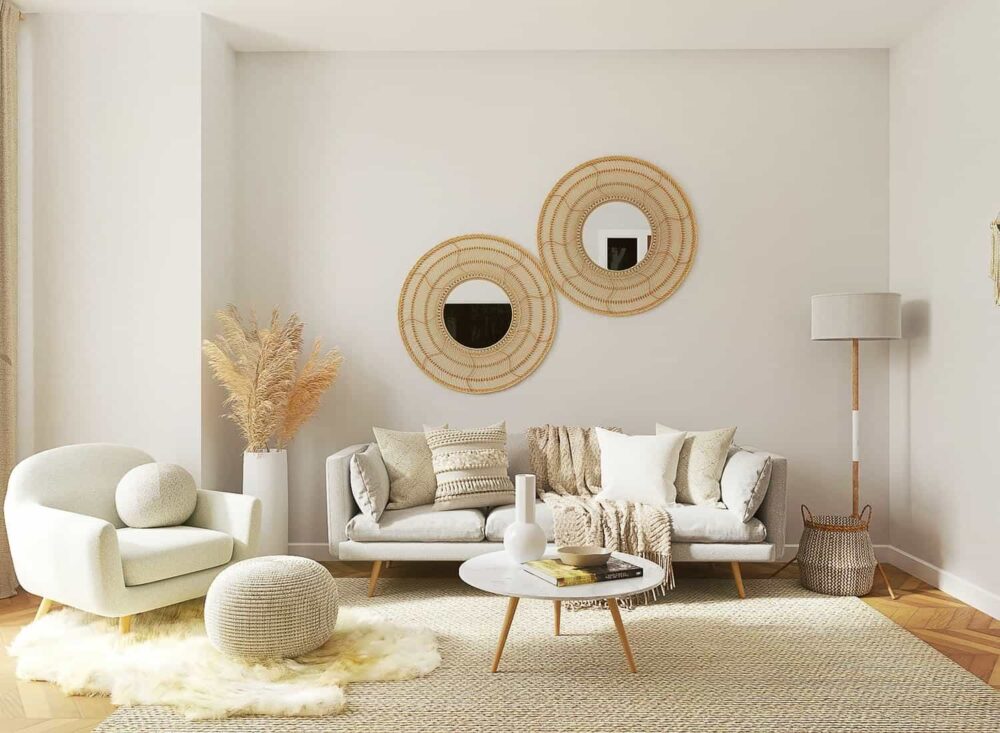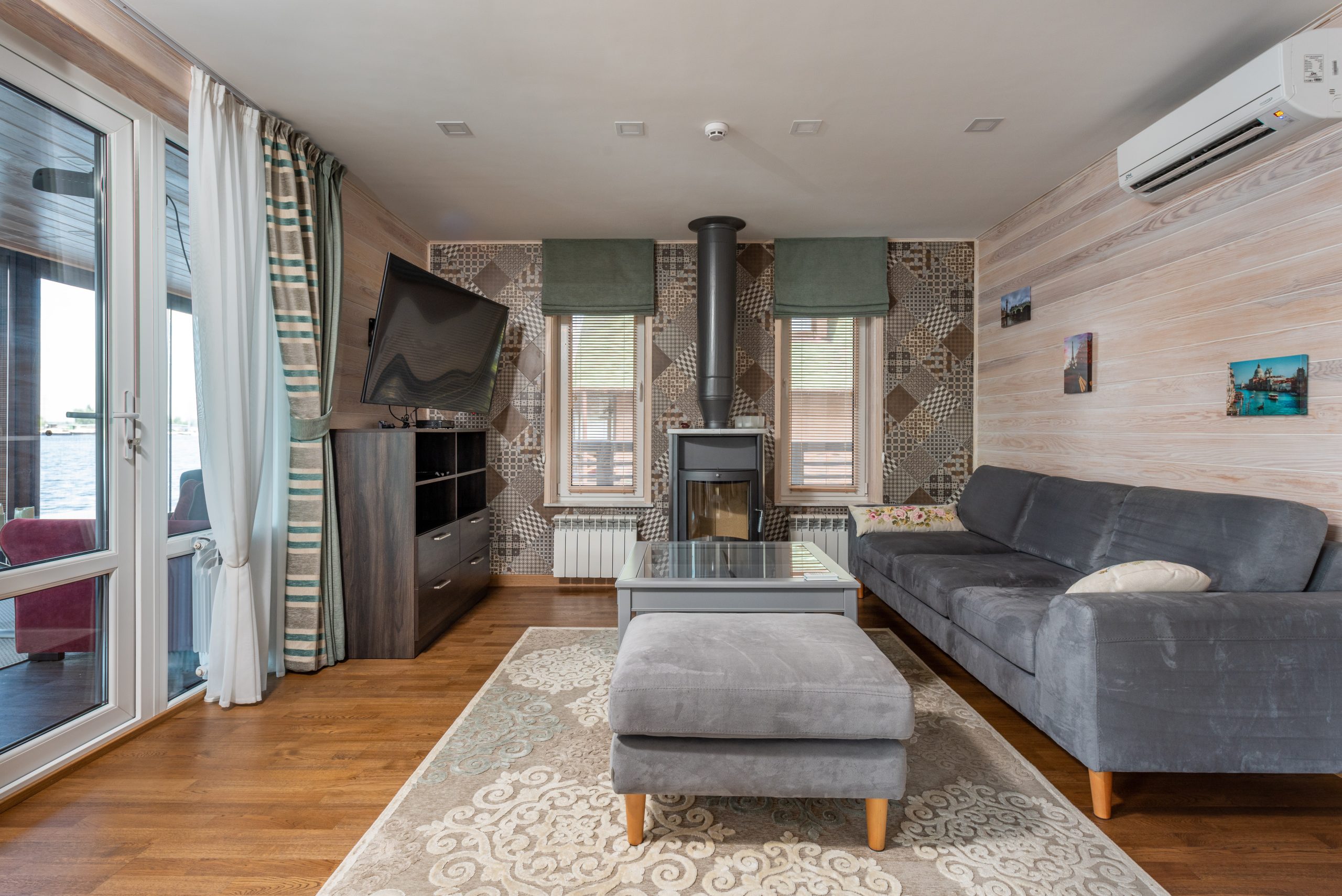Japandi design is a fusion of Japanese minimalism and Scandinavian simplicity, combining the best elements of both styles to create a harmonious and balanced aesthetic. Scandinavian and Japanese styles are very grounded and unornamented, unplanned design trends that are gaining popularity.
Of course, as fantastic as they are, new interior design trends emerge on a regular basis. Despite the odds, the essence of these designs remains quite graceful and perfectly imperfect.
As a hybrid trend, Japandi blends the Buddhist notion of finding beauty in imperfection with the Danish pursuit of delightful pleasures. The end effect is a zen home.
This style combines functionality and rustic minimalism to produce a sense of comfort, nature, and simplicity. The result achieves the ideal balance of practicality and form, with a focus on clean lines, light spaces, and vibrant colors.
Japandi is synonymous with an abundance of natural materials, subtle colors, and chosen furnishings. The decor is in neutral colors like soothing, quiet, and tranquil palettes. Stronger colors should be used lightly and subtly.
Best Ideas to Master Japandi Style in Your Bedroom
1. Artisan In Timberland
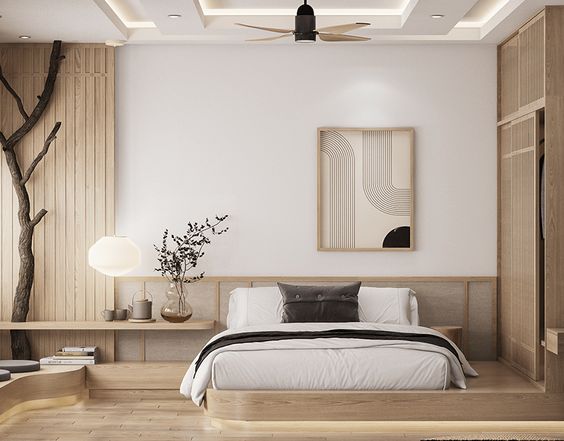
Japan’s building designs are built on wood because of the country’s abundant and adaptable supply of Timber wood which gives them a distinctively artistic character. Wood is used to create building structures, DIY decor, and furniture. Nordic designs emphasize comfort and simplicity. Consequently, these pairings result in superbly constructed, efficient, and pleasant furniture pieces.
2. Believe In The Weave

The traditional Japanese embroidery method is called “Little Stitch.” Multiple layers are stitched together, originally used for quilting in the 16th century, to offer reinforcement. The themes are typically classic or ancient geometric patterns that frequently take their cues from nature. Typically, white thread is used to stitch indigo-dyed cotton to create “Shashiko.” Dark blue dye with naturally occurring violet tones is used to paint indigo-colored textiles.
3. Hack the Black

One of the numerous similarities between Scandinavian and Japanese designs is the use of black. Its not surprising, then, that this current trend has made the moodiest color its own. Use black as an accent color to draw attention to a feature wall, multifunctional furniture, or decor. Consider painting architectural features like beams or columns black to produce a striking visual effect. Within the design framework, this can provide a contemporary touch and an element of curiosity. Fortunately, Japanese-Scandi artwork is frequently monochromatic, making it simple to combine your favorite white and black pieces in this decor.
4. Glider the Slider
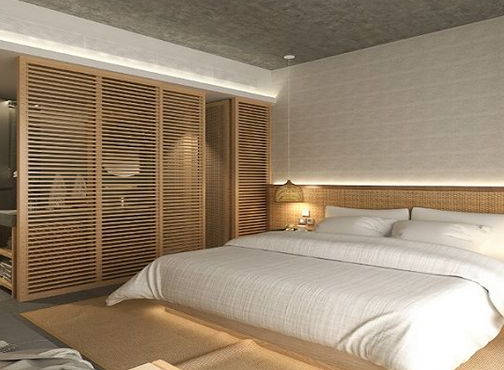
Instead of traditional hinged cabinet doors, consider using sliding doors for storage solutions in your japandi inspired space. Sliding cabinet offers a sleek and streamlined look while maximizing accessibility and space utilization. These slider panels are made of paper or fabric and are mounted on sliding tracks. They can be used to create partitions, filter light, or add privacy to specific areas of the room. Choosing this feature will seamlessly blend with the overall aesthetic, opting for clean lines and natural material and maintaining a clutter-free environment.
5. Brick or Block
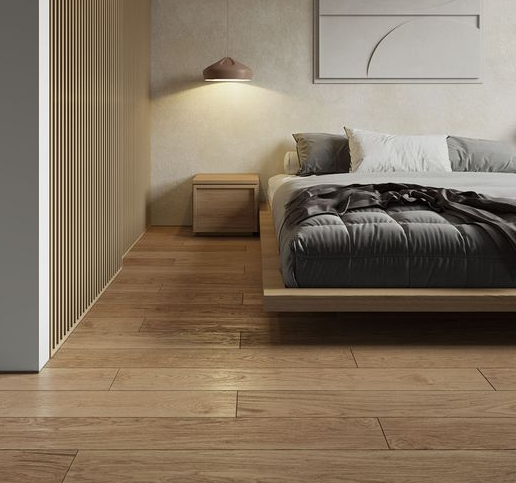
By now, it should be clear that wood plays a significant role in Japandi designs. Not only does it embody nature, preserve the neutral color scheme, and offer understated elegance, but it is also adaptable in terms of uses and forms. Many japandi spaces also feature wood flooring in addition to having wooden tables, chairs, and textures on the walls and ceiling. This makes the room feel cozier and more at home overall without being overpowering or competing with the other aspects. Compared to tiles, wood floors are more popular in bedrooms because they enhance the room’s cozy ambiance.
6. Less is More
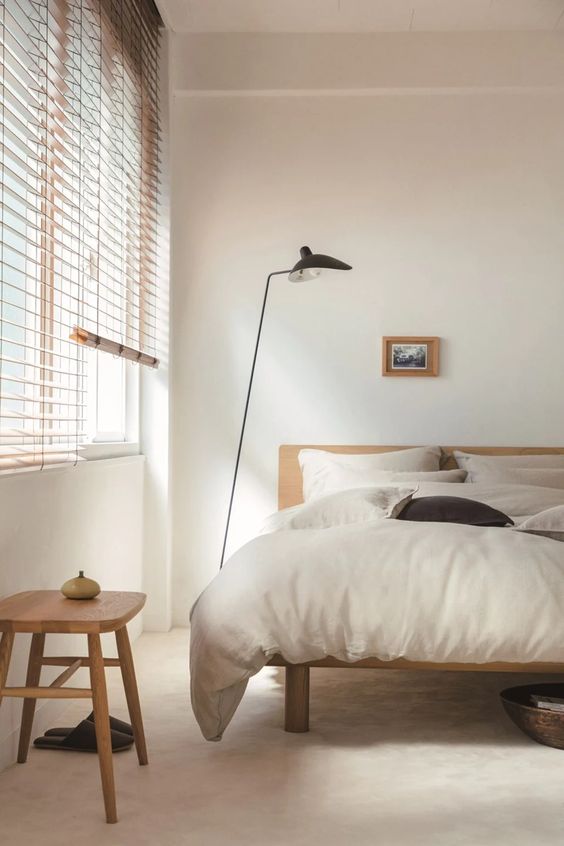
As you give your japandi room the finishing touches, your modest decor and accessories should also adhere to the minimalistic style. These extra layers and textures will give your area additional warmth and comfort while also showcasing your personality. You can start by layering sheer curtains, cushions, and soft materials. Try a textured, incredibly soft rug instead. You may choose between a dark or a white one for this.
7. Clutter to Declutter
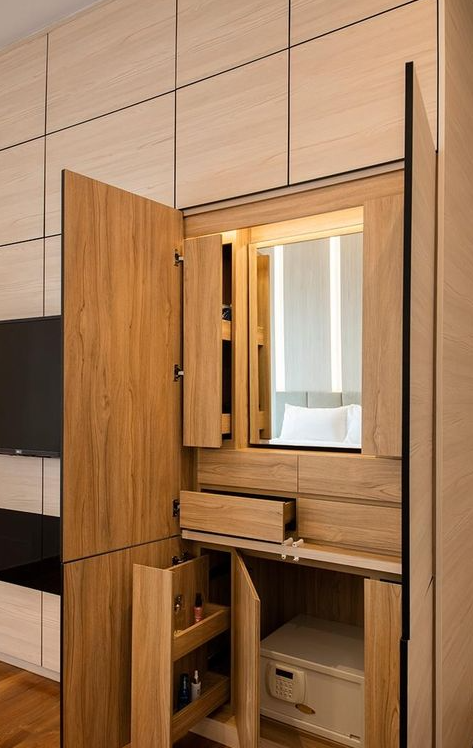
Decluttering is an essential part of the Japandi design, as it promotes a clean, organized, and serene environment. Clear surfaces like nightstands, dressers, and shelves of any extraneous objects. Keep just a handful of significant or useful items, like a lamp, a tiny plant, or a book. Surface cleaning contributes to the openness of the space. Simplify your wardrobe by assembling a small collection of variable and necessary items. Remove anything that doesn’t fit you anymore or is no longer useful. In addition to reducing visual clutter, a simplified wardrobe also makes it simpler to choose clothing and keep a space organized.
8. A Token for Open
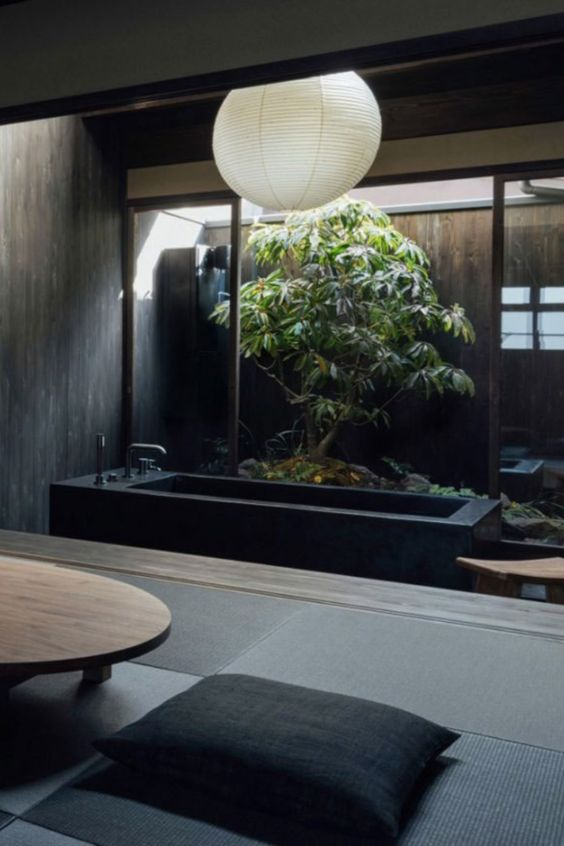
Accept an open floor plan that enables new transitions between various rooms of the house. This architectural concept removes unneeded barriers and partitions to promote openness and maximize natural light. Integrate your open designs into the surrounding environment. To bring the outside in, use indoor plants, organic materials, and earthy textures. By including sizable windows or glass doors that open up to a patio or garden area, you can create a seamless transition between the inside and the outside.
9. No Room for Bloaters; Say Yes to Floaters

Put up floating shelves on the wall to show off trinkets, books, or miniature plants. A simple and eye-pleasing display is produced by floating shelves while floor space is maximized. To adhere to the Japandi interiors, choose shelves made of natural materials like wood or bamboo. Floating bedside tables should be used instead of regular bedside tables. These can be hung directly on the wall next to the bed, eliminating the need for legs or extra floor sense. Select simple designs with a limited surface area and a drawer or shelf for needed storage.
10. Why Wabi, Sabi

Wabi Sabi is a Japanese beauty and philosophy notion that has some parallels with Japandi designs. Wabi Sabi promotes the charm of imperfection, transcience, and the natural world, whereas Japandi design mixes characteristics of Japanese simplicity and Scandinavian purity. It complements Japandi designs by adding depth and character to the space. It emphasizes the use of natural fibers and textures of stone and wood. Japandi’s design incorporates ideas of timeless elements that will age gracefully. The combination of these concepts allows for a space that evolves and tells a story, reflecting the passage of time and the appreciation of the beauty found in each other.
11. Channel Your Panels

Incorporating wall panels into a japandi bedroom can add depth, texture, and visual interest to a space. Shiplap paneling is a common choice in Japandi bedrooms for providing a clean and contemporary design. Its overlapping boards give the walls morality and volume. To preserve a quiet and harmonious decor, choose shiplap paneling in a light or neutral color. It can be utilized on a single accent wall or across the room to create a unified style. You can also install fabric panels to introduce softness and layered effects that complement the earthy tones of the palette.
12. Love is In The Color
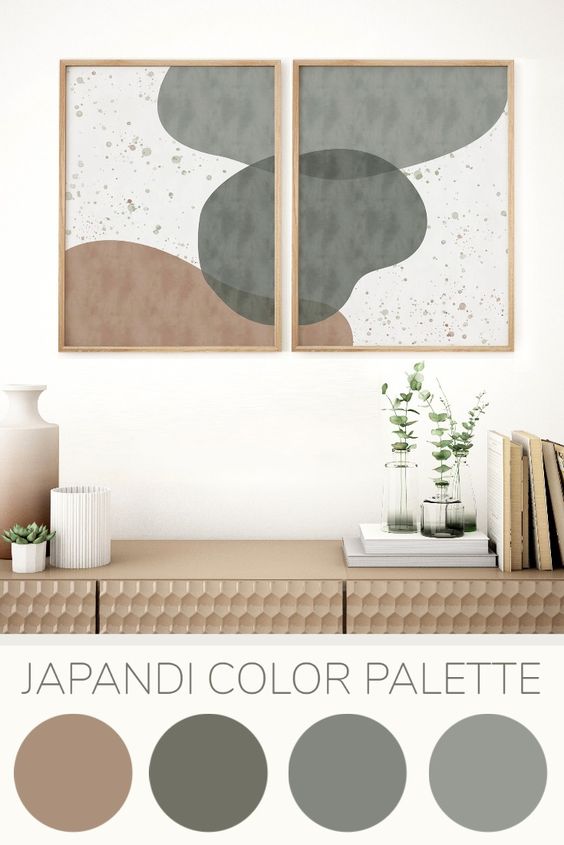
Japandi design often features subtle pops of color to embrace a soothing, nature-inspired palette. Select one accent color to use sparingly across the area. A gentle mustard yellow, dusty terracotta, or subdued pink, for example, might be used for decorative elements such as throw cushions, artwork, or a rug. Introduce soft pastel shades like pale blues, muted pinks, and light lavender through bedding or curtains. Emphasize the beauty of natural wood tones in furniture pieces, flooring, or accents. To create a grounding and organic atmosphere, use shades of warm browns, sandy beiges, and muted greens. Aim for a cohesive and understated palette that promotes a peaceful and uncluttered environment.
13. Dhanshari for Longevity
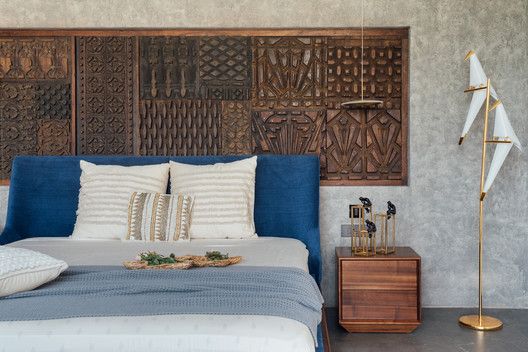
Japandi style glorifies the “dhanshari” concept as it aligns with eco-friendly practices. Incorporate handcrafted elements such as hand-woven textiles, pottery, or hand-made accessories. Choose items made from reclaimed or responsibly sourced wood, bamboo, rattan, or organic fabrics. These kinds of items will promote the preservation of traditional craftsmanship and support local artisans. By embracing dhanshari concept, individuals can adopt a sustainable and environmentally conscious way of life. This can create a harmonious balance between simplicity, functionality, and deep respect for nature.
14. Shine Bright Like a Shoji
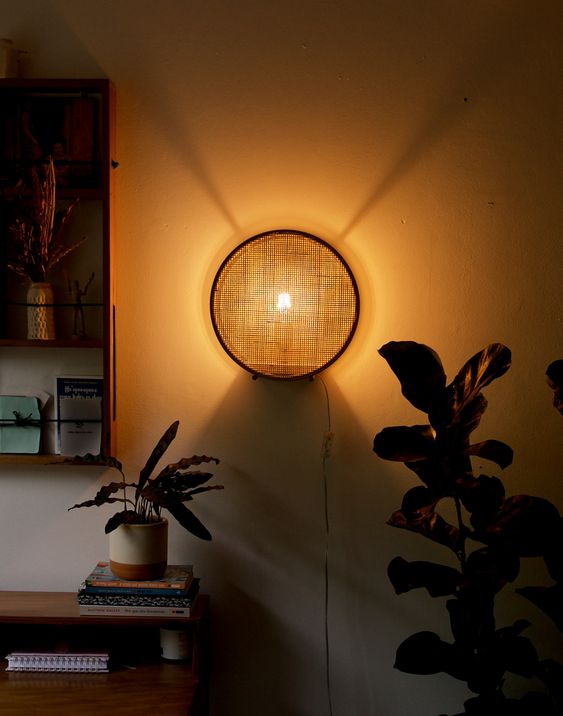
Shoji-inspired pendant lights can draw inspiration from the delicate and geometric patterns of shoji screens. Look for fixtures with panels made of frosted or textured glass. These lamps typically have frames made of wood or metal with panels made of glass or fabric. The soft diffusion of light through these tiles adds a touch of warm and ambient glow. You can also use shoji floor lamps to curate the soft and gentle glow to functional lighting in a space. The placement of these fixtures plays a significant role in complementing the simplicity and flow of light in the decor.
15. Dont Skip the Strip

Opt for furniture with subtle organic and irregular striped patterns rather than bold and structured stripes. Look for patterns that mimic the natural flow of lines found in nature, such as gentle waves, flowers, or leaves. Consider using an armchair or striped bench as a statement piece to create a contrasting effect of dark and light wood. Woods such as oak, teak, red pine, and mahogany serves as a proxy to maintain a sense of simplicity. The use of floaters or low-profile furniture sets a good example of being rooted to the earth.
16. Form Follows Function
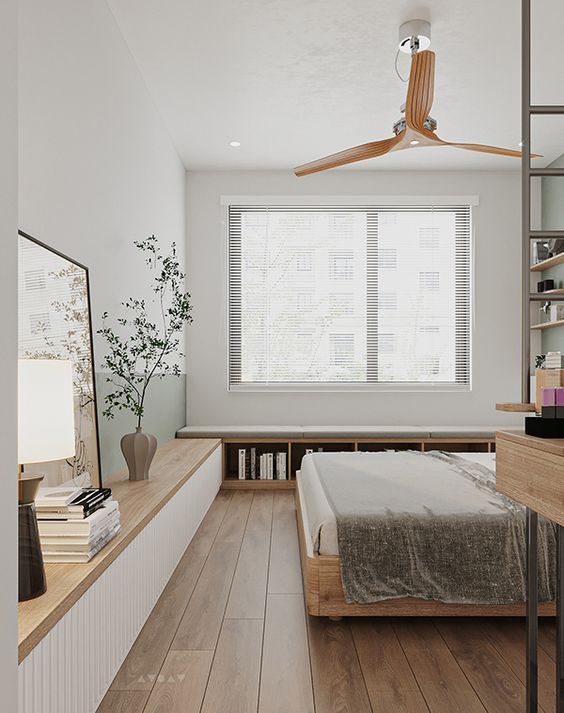
Japandi design is concerned with the ergonomics of furniture and space design. Comfort and utility are important considerations when choosing furniture and organizing it in the area. Excessive decoration and decorative components that do not serve a utilitarian purpose are avoided in japandi designs. The principle of “form follows function” is highly valued as it emphasizes a minimalistic and practical approach. Form and function should be one to balance the spiritual notion of their beliefs.
17. Furniture Multiverse
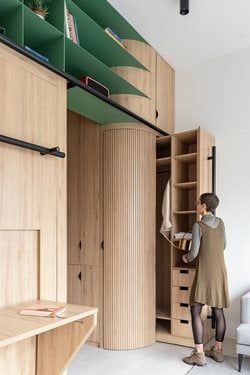
To maximize space in smaller Japandi bedrooms, look for convertible sofa beds that serve as a comfortable seating option and a cozy sleeping surface. Ottomans with built-in storage compartments provide a practical solution for decluttering. They can be used as extra seating footrests or even coffee tables while also offering hidden storage for blankets, pillows, or other items. Wall-mounted desks are ideal for creating functional workspaces in compact bedrooms. These desks can be folded up when not in use or used as an extension as a nightstand for the beds. This kind of furniture can be adjusted to expand or contract as needed. It offers flexibility and multi-usage, which supports the minimalistic style of this design.
Summing It Up
To sum up, the symbolism in Japandi’s design reflects a love of imperfection, balance, and simplicity. It motivates us to live intentionally and mindfully in order to create a tranquil and welcoming setting.
To put it quickly, Japandi’s design incorporates symbolism that symbolizes the concepts and goals of both Scandinavian and Japanese civilizations. Peace and equilibrium provide a sense of stability and the wabi-sabi values of beautiful imperfections.
Zen-inspired design features promote attentiveness, while natural aspects such as light and open spaces soothe the mind. These enigmatic components combine to create peaceful and meaningful Japandi Surroundings.
In short, it embodies the ideas and ideals of both Scandinavian and Japanese cultures. It places an enormous value on coherence and unity. Minimalism and organic components are metaphoric traits that emphasize what is essential.
A sense of homeostasis is brought about through tranquility and peace of mind. Certain elements encourage awareness, while natural elements like light and open areas calm the mind. These representational qualities work together to create a serene and profound Japandi space.
Does this style work for you? Thinking of minimizing your interiors? Let us know your thoughts.

